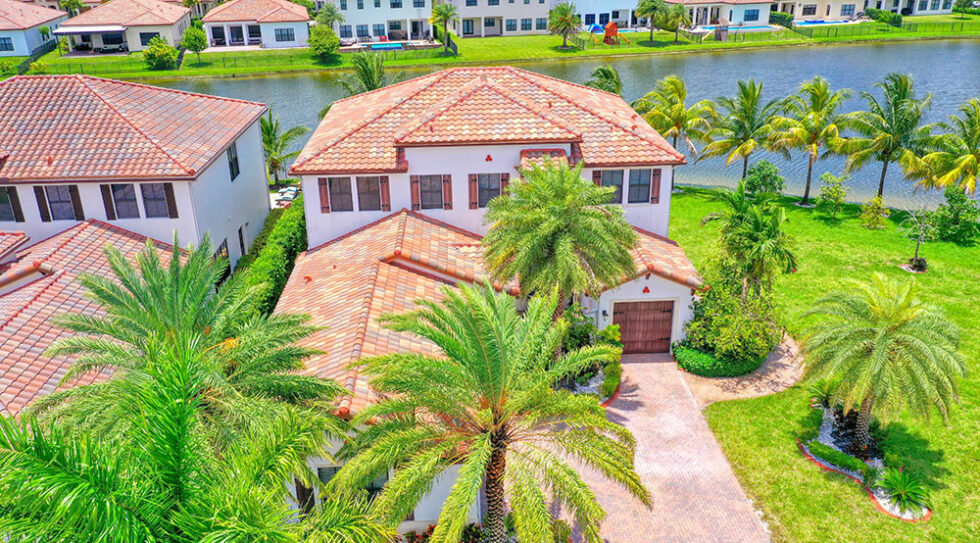In Boston, Harbor Towers condominium owners were hit last year with the $75 million special assessment to replace the electrical, heating, air conditioning and ventilation systems in the two aging 4-story buildings.
On the island of Maui, raw sewage backed up in condominium units in at least three different beachfront developments in recent years. The buildings’ cast iron sewer lines failed a decade earlier than expected – and at an expense the associations could not have anticipated.
In each of these communities, the major infrastructure systems were supposed to last a very long time. So replacement costs weren’t factored into the developer’s original plans, nor were they ever included in the associations’ reserve studies. And these associations aren’t alone, more than 90% of the associations responding to a recent national survey do not set aside funds for infrastructure repair or replacement.
That’s because most infrastructure systems don’t meet national reserve study standards for inclusion in reserve funding. “If cost, scope or timing of a potential project is unknown, it is still only a guess or a possibility, not a valid reserve component,” says Robert M Norlund, PE, RS, president of Association Reserves, Inc. in Calabasas, California.
But that doesn’t mean corrections can’t be made. In fact, they should be. “We all have to answer to one national standard. This means that any omissions in the past, whether incidental, accidental or intentional should be reduced in future years. That is the good news,” he says.
Throughout the United States, many associations have reserved funds for common area assets, but few have planned for the inevitable replacement of the largely unforeseen infrastructure. These critical components – such as wastewater collection and treatment, electrical and gas power supply and waste management systems – enable communities to function.
Last year, the March group asked more than 1000 community associations about their infrastructure and reserve study use. Ninety percent said they don’t have funds for infrastructure repairs.
Unfortunately, some are beginning to pay for the oversight. Peter B. Miller , RS, a reserve planner in Annapolis MD, says, many associations, both condos and HOAs, are having to adjust their budgets to account for deteriorating infrastructure and systems.”
That may be an understatement. Some associations now face multimillion dollar expenses for failed infrastructure systems because the developer didn’t include these systems in the association’s original budget or reserves. Most states don’t require developers to include items with a lifespan of more than 30 years in the reserves, and the associations didn’t subsequently add the components to their reserve plans.
However, the developer who has the foresight to include infrastructure items in the development reserves might help avoid future problems associated with the eventual failure of these hidden and ignored systems. Some developers are coming around to this realization. “Developers today are becoming increasingly sophisticated and understand that buyers are searching for financially strong communities. More studies include infrastructure components today than in the past,” says Robert A. Felix, CMCA, LSM, PCAM, RS, of the Felix Reserve Group in Denver.
It’s a challenge for developers today to add infrastructure reserves to their budgets. However, for a small investment during the sales cycle, a responsible developer could put the owners on notice that they must monitor and repair these infrastructure components, some say. “The challenge for the developer is to sell the advantage of a financially sound community. But it is so much less expensive to get it started now than to wait for 20 or 25 years and then add an expensive infrastructure component to a study,” Felix says.
John Poehlmann, RS, a principle with Reserve Advisors, Inc. in Milwaukee, disagrees. “Infrastructure components in new developments… are originally long lived and sometimes don’t have predictable remaining useful life expectancies even as old as 25 to 30 years. So, infrastructure items should not be included until they reach an age where one can predict their remaining useful lives,” he argues. “A future reserve study update will eventually identify these components,” he says. So far, for many associations that hasn’t been the case.
OUT OF SIGHT
“In Hawaii and other coastal areas, salt water and sand cause cast iron sewer pipes to age faster than normal,” says Thomas Douma, RS, president of Hawaii Inspection Group, Inc. in Kihei, Hawaii. Swimmers carry the sand and salt indoors, where they are washed off in the shower and into the pipes.
“Cast iron drain lines get continually scoured by the sand from the beach, causing them to deteriorate, “ Douma says. Eventually, a break occurs and raw sewage spills into the interior of the walls or backs up in toilets, cascading onto the floors. Frequently, those spills occur on the second or third floor, so that sewage also leaks into the units below. “If any pipes are exposed in underground parking garages, they deteriorate even faster,” he says.
“It’s premature failure. The projected life of the cast iron drain lines is probably 40 or 45, maybe 50 years. But in an area where we have a lot of sand and a lot of salt, they can fail much much earlier,” Douma says.
In Hawaii, those sewer pipes are breaking with greater frequency in buildings that are just 30 years old. They’re just not lasting their projected life, particularly in areas of sand and in areas with a lot of salt in the air,” Douma says. “The projections are inaccurate.”
Robert Miskae, a former community manager who works with Douma conducting inspections on the island of Maui, says infrastructure is rarely discussed by Association boards. He repeatedly warns communities of the perils of not being prepared.
“Why wait until you see sewage bubbling up through the surface,” Miskae asks. “To ignore the enormous investment underground or within the walls of buildings can be catastrophic.”
“Reserve providers and other professionals are trying to get state officials’ attention to the growing problem,” says Miskae, who is also a board member with the Condominium Council of Maui.
“Laws haven’t been enacted that mandate long term reserve funding for items such as this,” he says. “We are lobbying here and in other states to make sure these items are put into the reserve studies in advance. If infrastructure items are included in reserve studies in the first 5 to 10 years of a development, board members will have more time to prepare,” he says.
At Boston’s harbor towers, board members knew the buildings, which were built in 1971, were aging. They had regular capital reserve studies performed. But the severity of the problems with the HVAC system wasn’t known until the walls were opened up, they say. Thought water had corroded the iron heating and cooling pipes. The $75 million special assessment approved in August 2007 is being used to replace the iron pipes with copper.
“Our capital reserve study probably identified 10% of what the total all encompassing, long term capital needs might be,” says Ann Thornburg, Finance Committee chair and former board chair for Tower II , who is also a former financial consultant. “The need to look beyond the capital reserve study is job number one for fiduciaries.”
While board members could have phased in or Postpone the work until there was a major failure, they chose not to. “We expanded the study to see what else could be coming up,” she says. That enabled the board to prepare a long-range financing plan for the owners.
Infrastructure components can be staggeringly expensive, especially since, in some cases, regulatory changes and classification suits have mandated the use of upgraded materials. Even without these regulatory strictures, consumers are demanding more sophisticated and expensive materials. Aluminum wiring commonly used in the 1970s was thrown over for copper. Copper is more expensive, but it doesn’t overheat and cause fires as aluminum did. During the past 20 years, polybutylene plumbing pipe has fallen out of favor due to leaks, and it is usually replaced with more expensive galvanized or copper pipes. Fiber optic cable has replaced coaxial cable to meet a consumer demand for optimal access to cyberspace.
The enormity of the expenses associated with replacing infrastructure features makes it necessary for boards to let association members and perspective buyers know if funds are not reserved to cover them. This is to protect the board from possible liability.
DISCLOSE OR RESERVE
Many Association boards do not know they need to disclose to association members End perspective buyers that infrastructure items are not included in the association’s reserve study or reserve funds. Nevertheless, with the amount of litigation in our society today, it’s just a matter of time before someone points a finger at a board or Association for lack of disclosure.
“Board member liability is becoming a hot topic today and serving as a volunteer board member with new laws and regulatory oversight is not as easy as it was 20 years ago, Los Angeles attorney Adrian Adams explains.
Under the business judgment rule, once a board is aware it has a problem with the infrastructure, it’s obligated to repair, replace or set up a mechanism to fund repairs within a reasonable period of time.
Because these systems are such big-ticket items, some boards have preferred to put the issue to a vote of the full membership, letting homeowners decide whether to repair, replace or do nothing. Adams cautions against this approach. “Since directors have the duty to oversee the infrastructure and decide when and how repairs are made, pushing the decision to the membership is, in effect, and abdication of their duties. If given the opportunity, most members vote against special assessments. If the Association decides not to do anything, it most likely will be sued for negligence, breach of CC&Rs and breach of fiduciary duty,” he says.
Adams, who has specialized in Community Association management law since 1981, has seen many infrastructure problems result in major financial assessments – problems that could have been legal bombshells due to the lack of disclosure. He relates the story of a young couple who bought a home in a 30-year-old Association. “They attended their first annual meeting, only to learn that their reserves were woefully underfunded. Only 8% of the required reserves were available due to unexpected expenditures for infrastructure repairs,” Adams explains.
“There were no line items in any previous budgets, nor were any of these systems included in the reserve study. The likelihood of a large special assessment is looming for this young couple, who will have great difficulty paying in the current economic scenario and may, in fact, lose their home altogether,” Adams says.
If they do lose their home, they are in a position to bring legal action against the Association for failing to disclose this financial situation before they purchased a home in that community.
For board members in associations that are older than 30 or 40 years and who appreciate the infrastructure needs, these components are becoming a major concern. These boards know the components will continue to deteriorate and cause multimillion dollar assessments. They also know, as Nordlund points out, “wishful thinking is not an accurate or effective plan.”
SNEAK PEAK
Until recently, there has been very little technology or expertise available that would allow the nondestructive testing of internal pipes, electrical wiring, gas and water mains and sewage systems. Consequently, some boards were unsure of the age, current condition or anticipated lifespan of these systems, and the cost to find out were too high and testing methods too invasive. An analysis usually required taking a system out of service for an extended period, which was inconvenient or impossible in most situations.
However, infrastructure components can now be analyzed without invasive techniques. But it requires the assistance of experienced professionals with the proper tools.
“Today, the use of the latest tools and technology allows infrastructure assessments to be much more accurate and cost effective than they were as little as ten years ago,” says Jerry Loftus an environmental division manager with Pennoni Associate in Wilkes-Barre, PA, who has more than 40 years’ experience assessing the infrastructure needs of municipalities, hospitals, schools and developers.
Some of the technologies include sonar imaging, thermographic imaging, video snaking an ultrasound. “The assessment of the condition and remaining life requires specialized skills and knowledge. The level of expertise required is often beyond the capabilities of typical reserve study providers or even on-site engineering staff,” Loftus says.
The costs for these types of analyses are steep and may explain why some boards forego them at budget time. Costs vary according to Association size, type and location, but a baseline average is somewhere in the range of $10,000 to $20,000. That may sound like a lot for analyzing a component, but it’s nothing compared to the multimillion-dollar price tag on a new sewer system. “Managers and Association boards can choose to wait until it breaks or be proactive and assess the current condition of their infrastructure assets and their financial future,” Loftus says.
Infrastructure components are easy to overlook when funding reserves. However, as the number of associations that approach or pass the 30 year mark increases, the number of infrastructure failures will increase as well – often at great cost. “Knowledge of the latest developments in materials, systems and regulatory requirements helps assure Association boards that their infrastructure can be managed to maximize life and minimize costs overtime,” Loftus says.
Boards have a fiduciary duty to protect, maintain and enhance the assets of the Association. That includes a duty to investigate, evaluate and take appropriate action to safeguard infrastructure systems. Analyzing the condition of these systems will be costly, as will funding their replacement reserves, but making that investment now will save the Association from a financial disaster in the future.
RESOURCES: RESERVE FUNDS – HOW & WHY COMMUNITY ASSOCIATION INVEST ASSETS Edited by Mitchell H Fumikin and Nico F March
Helping You Build a Firm Financial Foundation For Your Future.
Nico F. March is the Managing Director for The March Group, LLC. He has worked with Community Associations since 1974 and has served on several Boards, including the Board of Directors for the Community Association Institute (CAI), San Diego Chapter. His team has specialized in Corporate Cash and Association Financial Management since 1982 and has assisted over 1000 Associations, Nonprofits and Timeshares invest over $4 Billion in reserve, operating and reconstruction funds. Nico and his team work out of their San Diego and Wyoming offices and may be reached at 888.811.6501 or email [email protected] for further information and consultations.
The March Group is not a tax or legal advisor. We will be glad to work with your professional CPA and Attorney to help you with your financial goals. Neither the information contained herein nor any opinion expressed shall be construed to constitute an offer to sell or a solicitation to buy any securities mentioned herein. Clearing services provided by LPL Financial.
CMAX #1-05108189



